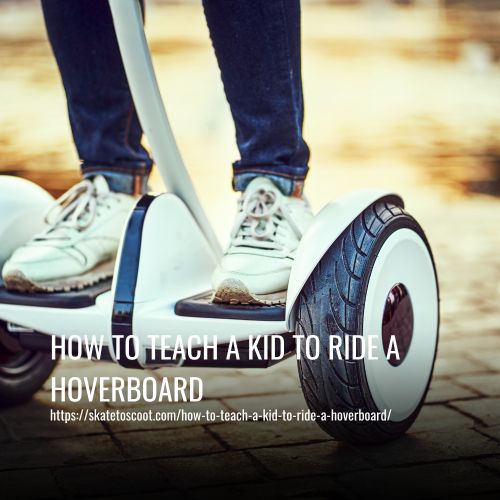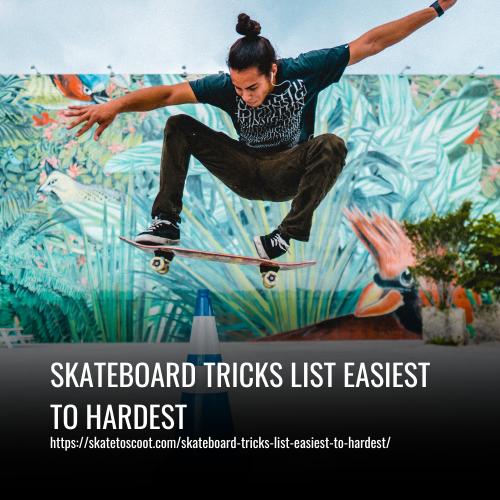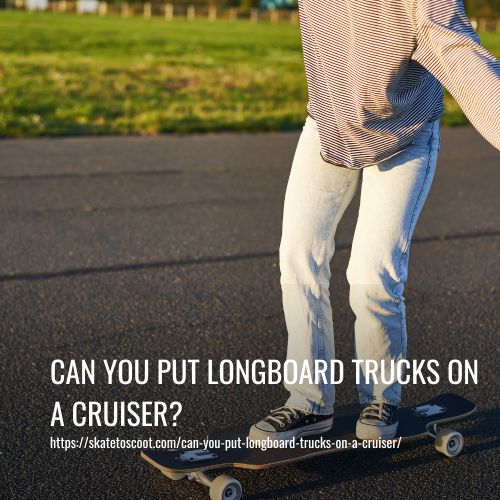As an Amazon Associate we earn from qualifying purchases.
If you’re looking for an exciting way to teach your kid a new skill, hoverboarding is a great option. But if you’re worried about safety or don’t know where to start, this guide will help you out. We’ll cover everything you need to know about teaching your kid to ride a hoverboard safely and effectively.
First and foremost, safety should come first. Make sure you have the proper safety gear such as helmets, elbow and knee pads, and wrist guards. Start by practicing on a level surface with slow speeds and set a speed limit that your kid should not exceed. You can also take advantage of the beginner mode or riding modes available in the hoverboard to gradually increase your speed and skill level.
Before getting started, make sure your kid has the right hoverboard for their level. There are various types and sizes available, so choose one that fits your kid’s foot horizontally and weight placement. Teach them to stand with their dominant foot placed on the hoverboard first and then the other foot while maintaining the center of gravity.

What Parents Need to Know About Hoverboards
Hoverboards are a popular product among both kids and adults, however, they come with significant safety concerns. Unlike what the name suggests, these devices do not hover. They instead look like small hands-free segways. Hoverboards have caused injuries due to falls and also have a history of overheating, exploding, or setting on fire.
Due to several products recalls in 2016 and 2017, it is essential to follow safety measures while using hoverboards. It is recommended to charge hoverboards in open spaces away from combustible materials under supervision and to avoid using them near or on roads.
It is important to have a fire extinguisher nearby during charging or using hoverboards in or around your home. Make sure kids wear protective equipment while riding, including helmets, elbow and knee pads, and wrist guards.
Are hoverboards safe for kids?
Hoverboards have gained popularity as a gift for kids, but have also received criticism due to several accidents. Viral videos of people crashing into objects and boards spontaneously exploding have raised safety concerns among parents.
However, these incidents mostly occur due to low-quality manufacturing and batteries. By investing in a high-quality hoverboard and ensuring proper battery positioning and insulation, the risk of explosions can be significantly minimized. In addition, speed is a crucial factor in safety. Wearing protective gear, such as helmets, can reduce the risk of injuries.
Alternatively, parents can also consider e-scooters for kids, which operate similarly but with the added support of a handlebar. Overall, while hoverboards can be safe for kids, it is important to prioritize quality and safety measures.
How do I choose a hoverboard for my kid?
Looking to buy a hoverboard for your child can be tricky. Luckily, there are a few features you can consider to ensure your child’s safety and enjoyment while riding.
Firstly, consider the safety features of both the hoverboard and its parts. Check the size, age suitability or restriction, and speed limit of the board, as well as its battery life and energy consumption.
Some hoverboards also have different riding modes, which can be helpful for beginners. Additionally, some boards may offer extra features such as colorful designs, lights, or themes.
It’s also important to check the type of tires it uses and ensure they are provided with the board. By considering these factors, you can find the perfect hoverboard for your child to enjoy safely.
How can my child stay safe on a hoverboard?
Children, as well as adults, must use helmets and protective gear like elbow and knee pads when riding hoverboards. It is important to educate kids on the responsibility of riding a motorized vehicle and to never consider hoverboards as toys.
As with other riding gear like bikes, snowboards, or skateboards, it is important to explain the safety guidelines to your child. As a parent, it is your duty to ensure your child’s safety by providing them with the right protective gear and supervising their hoverboard use. This way, they can enjoy a fun and safe ride on a hoverboard.
Riding a Hoverboard
Hoverboards have become a popular form of transportation and recreation for both kids and adults. Riding a hoverboard can be a fun and exciting experience for children, but it is important to educate them on the proper safety measures and techniques to prevent injuries.
1. Moving forward and backward:
Mastering how to move forward and backward is a fundamental skill to learn when riding a hoverboard. To move forward, apply pressure with your toes and lean slightly forward using your ankles. Ensure that you keep your waist straight for better balance.
When moving backward, lean your body slightly on your heels and move in a backward motion. It’s best to practice moving forward and backward a few times to get accustomed to the hoverboard’s movements before trying to turn. Remember, always maintain proper balance, especially on a level surface, to avoid accidental falls.
2. Turning:
Once you have a good understanding of how to move forward and backward on the hoverboard, it’s time to work on your turning skills. Turning is essential to safely navigate different environments and avoid obstacles in your path. The key to turning is to shift your weight and maintain proper balance throughout the entire motion.
To turn left, begin by leaning on your right toe. This will shift your weight to the left side of the hoverboard, causing it to turn in the opposite direction. Keep your left foot still and lean slightly in the direction you want to go. Similarly, to turn right, lean on your left toe while keeping your right foot still and leaning in the desired direction.
Remember to start with slow speeds and on flat surfaces until you’ve mastered the skill. With practice, you’ll be able to maneuver your hoverboard with ease and confidence.
3. Spinning:
Spinning is one of the most exciting moves you can perform on a hoverboard. To execute it, you need to follow the same procedure as when turning but continue until completing a full circle. This maneuver can be performed in either direction, providing an opportunity to showcase your skills.
4. Stopping and Getting off a Hoverboard:
When you are riding a hoverboard, it is important to know how to stop and get off safely. To come to a stop, gradually straighten your body and shift your weight slightly backward. This will slow you down until you are at a complete stop. It’s important to practice this maneuver at slow speeds before trying to do it while going fast.
To get off the hoverboard, bring it to a complete stop and step off with your dominant foot first. Keep your other foot horizontal as you step off to avoid it getting caught in the wheels. It’s important to always wear the appropriate safety gear, such as a helmet and protective pads while riding. Remember to review the manufacturer’s instruction manual to ensure that you’re aware of any specific safety tips or riding modes that may be available.
What to Avoid when Riding a Hoverboard
When learning how to ride a hoverboard, there are specific things to avoid doing to reduce the risk of accidents and injuries. Hoverboards can be fun, but it’s crucial to prioritize safety first. By following a few simple guidelines, you can ensure that your child has a safe and enjoyable ride. In this article, we’ll discuss what not to do when riding a hoverboard to minimize the risk of accidents.
1. Avoid looking down:
To prevent colliding while riding, avoid looking at your feet once you’ve gained confidence. It’s crucial to focus on what’s ahead of you instead of confusing by looking at your feet. Initially, you may need to glance down a couple of times to stabilize your balance.
However, eventually, you must shift your focus to the center of gravity and the level surface rather than your feet. Keep your foot horizontal and weight placement centered to avoid any imbalance. You must learn to adjust your balance according to the weight shifts while riding to stay stable.
Practice riding on a flat surface at slow speeds before attempting any skateboard tricks or riding an off-road hoverboard. Remember to adhere to speed limits, and safety standards, and wear the necessary protective gear.
2. Avoid trying tricks:
Hoverboards are not designed for performing skateboard tricks as they cannot handle the impact. Attempting such stunts can result in damage to the board, its motors, and battery life as well as injury to the rider. It is important to stick to riding on flat surfaces at slow speeds and within the recommended speed limits.
Always wear safety gear such as helmets and padded shorts to protect yourself in case of a fall. It’s important to prioritize safety over showing off or trying out advanced riding skills. Stick to the basics and practice weight placement and shifts to improve your balance on the board.
Always follow the instruction manual and utilize the learning and beginner modes to enhance your skills gradually. Remember that the self-balancing feature only goes so far, and you should never attempt any tricks or stunts beyond your skill level.
Bending your knees
When riding a hoverboard, some might think that bending their knees could improve their balance by lowering their center of gravity, but this is not recommended. (Some people try to bend their knees to get a better balance by getting closer to the ground. However, bending your knees can mess up your weight placement and confuse the self-balancing gyroscope.)
In reality, bending your knees can cause problems with your weight placement and disrupt the self-balancing gyroscope, which could result in a loss of control or even an accident. Instead of bending your knees, it is better to focus on keeping your feet parallel to the hoverboard and your weight evenly distributed.
This way, the gyroscope can accurately gauge your positioning and make the necessary adjustments for proper balance. Remember to start slowly and on flat surfaces until you get the hang of it. With practice and patience, you will be able to ride a hoverboard with ease and confidence.
FAQs
Generally, kids around 8 years old and above can begin learning to ride a hoverboard, but individual motor skills and coordination vary. Always supervise younger children closely and ensure they wear safety gear.
Prioritize safety by having your child wear a helmet, knee pads, elbow pads, and wrist guards. Choose a flat, obstacle-free area for practice, and supervise them closely during the learning process.
Start by teaching your child how to mount and dismount the hoverboard safely. Encourage them to practice maintaining balance by placing one foot at a time on the board while holding onto a stable support for initial stability.
Encourage your child to practice weight shifting and maintaining a relaxed stance while riding. Focus on looking straight ahead rather than down at the feet and gradually increase riding time as confidence and balance improve.
Opt for hoverboards with lower speed settings and beginner-friendly modes, ensuring they have appropriate safety features like anti-slip foot pads and stability features to support learning.
The learning curve varies for each child. Some might become comfortable within a few days, while others may take a couple of weeks. Consistent practice, patience, and encouragement are key to their progression.
Conclusion:
Teaching a kid to ride a hoverboard may seem daunting at first, but with the right approach and safety measures in place, it can be a fun and rewarding experience for both you and your child.
Remember to take it slow, encourage them every step of the way, and always prioritize safety. With a bit of practice, your child will be cruising around on their hoverboard in no time!
Amazon and the Amazon logo are trademarks of Amazon.com, Inc, or its affiliates.



